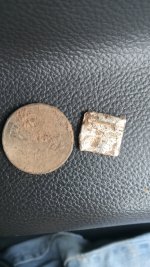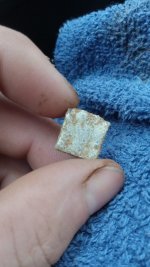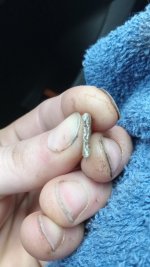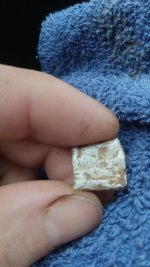Digginitdaily
Full Member
- Apr 24, 2023
- 221
- 616
So it rained last night and I figured I'd try to find some silver coins today . I searched under a no longer there clothes line and pulled up this square piece of silver. I can make out the date of 1775 on the side but have no idea what it could be . I'm guessing it was someone's paycheck they lost ... I bet there wife was pissed !
Amazon Forum Fav 👍
Attachments
Upvote
9












